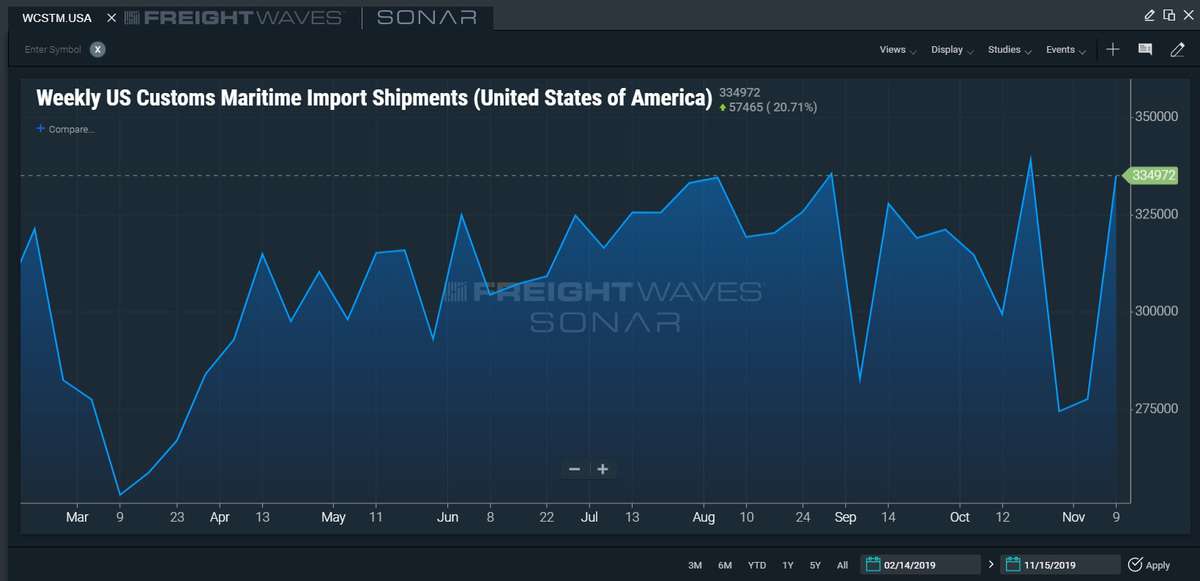Manila, Philippines-based Asian Terminals Inc. (PSE: ATI) reported third quarter revenues this year of 3.13 billion Philippine pesos ($60.35 million) along with net profits after tax of just over 707.44 million pesos ($13.65 million) for the period.
Revenues generated from operations in the third quarter declined marginally on a year-on-year basis by about 0.92% from 3.16 billion pesos ($58.40 million) in 2018. But net profit after tax fell by about 10.28% year-on-year from about 788 million pesos ($14.59 million).
The damage to the third quarter results was done by a surge in costs and expenses, which rose from 1.24 billion pesos ($22.96 million) in the third quarter of 2018 to 1.47 billion pesos ($28.41 million) in the third quarter of this year.
Unfortunately, the company does not provide commentary on its third quarter results, but it does provide commentary on its nine-month results.
The company complies with Philippine Financial Reporting Standards in reporting its financial results.
Nine month revenues, costs and profits
In the nine months from January 1 through September 30 this year, Asian Terminals reported 10.17 billion pesos ($196.13) of revenues, which is a 14.81% increase on the corresponding period in 2018.
The company attributed the nine-month revenue growth to an increase in ocean shipping container volumes at its South Harbor International and its Batangas Container Terminals. Volumes grew by 12.3% and 38.75% respectively, the company said in a statement.
Asian Terminals’ generated a gross profit of 8.36 billion pesos ($161.37 million), which was a 15.95% year-on-year increase on the corresponding period of 2018.
Taking some of the shine off the revenue and gross profit news, the company generated costs and expenses of 44.10 billion pesos ($81 million), a 16.45% increase on the corresponding period of 2018. In absolute terms, that’s a year-on-year increase in costs of just over 593,000 pesos ($11.45 million).
It appears that Asian Terminals experienced a generally higher-cost environment this year. But, underlying that increase in cost was good news. Those hikes in expenses were often related to higher throughput and profitability. Higher container volumes led to a greater demand on the workforce and so the company paid higher overtime costs and sourced additional headcount. There were also salary rate increases for the workforce too. Meanwhile, management fees increased due to an increase in net income. Another significant cost hike was a rise in equipment running costs, which was caused by greater consumption and higher prices of spare parts, tires, electricity and fuel.
There were several other increases. The company also experienced a hike in a variety of real property and business taxes. Security, health and environment costs increased because of “an increase in safety initiatives.” Insurance premiums also surged. Trucking costs increased too by 144.6%, from 34.3 million pesos ($634,583) last year to 83.8 million pesos ($1.66 million) in 2019.
Net profit after tax for the first nine months of 2019 stood at $2.85 billion pesos ($55.02 million), a 30.21% increase on the same period last year. In absolute terms, that’s an increase in net profit after tax of $12.76 million. It also means that company is, so far this year, just over 661.51 million pesos ($12.76 million) ahead in profit compared with the same period last year.
About Asian Terminals
Founded in July 1986 as “Marina Port Services,” Asian Terminals manages and operates South Harbor, Manila, on behalf of the Philippine Ports Authority and will do so until May 2038.
The South Harbor container terminal provides nine ship-to-shore cranes, 23 rubber-tired-gantry cranes and a variety of other equipment to handle containerized ocean cargo. There are five berths, with a depth alongside of 12 meters, and 260 reefer plugs. The terminal has 250 truck slots and capacity for 1.2 million twenty-foot equivalent unit (TEU) ocean-shipping containers.
South Harbor also boasts a four-berth general cargo terminal for handling up to one million metric tonnes of bulk and break bulk cargo. The depth alongside is about 10.4 meters and the terminal has two warehouses for the storage of sensitive cargoes. A variety of heavy-lift equipment capable of handling safe working loads between 3 and 32 tonnes are available.
Asian Terminals also operates Batangas Container Terminal, about 57 miles to the south of the capital city, Manila. Batangas is a much smaller terminal of two berths with 13 meters depth. It has two ship-to-shore cranes, four rubber-tyred-gantry cranes and an annual capacity of over 300,000 TEUs.

Read more stories by Jim Wilson. Jim is based in Australia but he mostly covers Asia’s maritime sectors. He can be reached with comments, suggestions and tips via jwilson@freightwaves.com.







